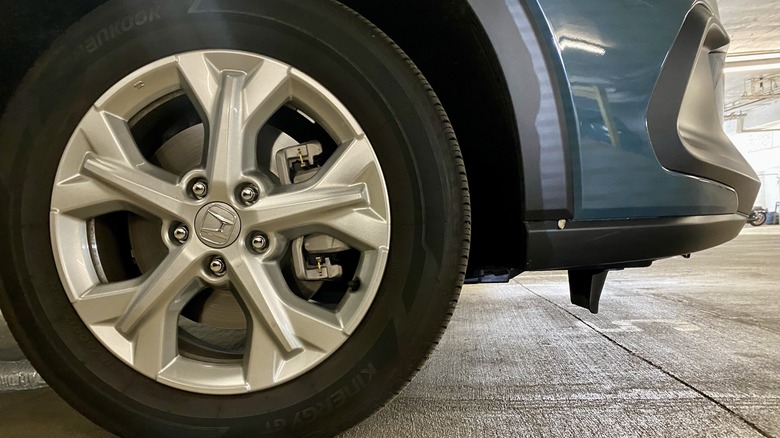
Automobiles are highly complex devices. The myriad components of contemporary automobiles that individuals encounter daily yet comprehend inadequately exemplify this phenomenon. Extensive efforts encompassing countless hours of investigation, innovation, design, and validation contribute to almost every aspect of these vehicles. With escalating emission standards and heightened fuel efficiency demands from consumers, an increasing proportion of these investigative hours now focuses on crafting enhanced systems. aerodynamically advanced and efficient cars.
If you notice an element on the outside of a contemporary vehicle, chances are it serves a crucial purpose. This brings up a frequently posed query: What’s with that odd plastic piece sticking out ahead of my car's front wheels? To start, we should identify these components. The small plastic pieces protruding in front of your car's front wheels are known as spats.
Have you noticed that swishing sound when cruising down the highway? That’s wind noise, which occurs as your vehicle cuts through the air traveling at speeds of 65 mph or whatever velocity you might be moving at. This phenomenon is frequently referred to as aerodynamics thrown into conversations when enthusiasts discuss automobiles, and this occurs due to the attributes of an object influencing how effortlessly it can glide through the atmosphere.
Read more: Consumer Reports' Top 10 Affordable Used Cars Under $20,000 Can Help You Avoid Republican Tariffs
Spats Are Designed To Divert The Air Away

Have you ever observed that sports cars and racing cars sit very close to the ground? This design reduces their vulnerability to air drag, allowing them to achieve higher speeds more efficiently. Similarly, the wheel fairings at the fronts of these vehicles serve an aerodynamic purpose.
While driving, these small wheel spats shield rapidly moving air from striking the broad, level area of your tire’s tread, channeling the airflow to reduce aerodynamic drag and boost aerodynamic efficiency. This design improvement helps stop the front end of your car from lifting when traveling at high speeds, enhancing your grip and control over the vehicle. Additionally, some vehicles employ such wheel spats or underbody fins not just to divert air around the tires, but also to guide it towards the brakes for cooling purposes, ensuring they function optimally.
These flaps positioned behind the wheels serve to stop tires from kicking up road debris such as mud or stones. In contrast, when located ahead of the tires, their purpose is to enhance aerodynamic efficiency. A vehicle with superior aerodynamics requires less fuel—be it gasoline or electric—to travel. Optimized aerodynamic design offers numerous benefits: improved efficiency, reduced wind noise at high speeds, and enables cars to reach greater top speeds safely without compromising stability.
Want more like this? Join the Jalopnik newsletter To receive the most recent automobile news directly in your email...
Read the original article on Jalopnik .
